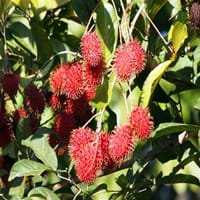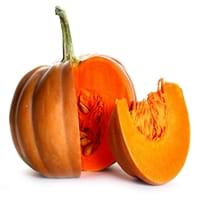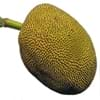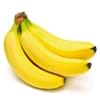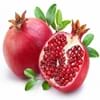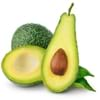Health Benefits
Anti-oxidant properties, Boosts immune system, Skin rejuvenation, Strengthening of bones
Arthritis treatment, Cancer prevention, High Cholesterol Regulation, Lower blood pressure, Helps Prevent cataract, Prevents gall stones, Ulcer treatment, Weight loss properties
General Benefits
Antiseptic properties, Cures headache, Removes waste from kidney
Boosts respiratory health, Eliminate parasites and infections, Protects against birth defects, Strengthens bones
Skin Benefits
Hydrates skin
Heals sunburn, Hydrates skin, Skin rejuvenation
Hair Benefits
Good conditioner
Regulates hair growth
Allergy Symptoms
Chest pains, Rhinitis, Wheezing
Abdominal cramps, Anaphylaxis, Digestive Problems, Dizziness, Eczema, Fainting, Hives, Inflammation, Itching, Tingling sensation in wrist and face, Vomiting, Wheezing
Side Effects
Unknown
Kidney and gallbladder diseases
Best Time to Eat
As a snack in the late afternoon, Don't consume at night and before bed, Eat the fresh ones, avoid mixing with any other foods, don't eat after meal., Morning time (before lunch)
Along with meal, Don't eat after meal, Morning time (before lunch)
Vitamin B5 (Pantothenic Acid)
Vitamin C (Ascorbic Acid)
Vitamin K (Phyllochinone)
Calories in Fresh Fruit with Peel
Calories in Fresh Fruit without Peel
Not Available
Calories in Frozen Form
Not Available
Calories in Dried Form
Not Available
Calories in Jam
Not Available
Calories in Pie
Not Available
Type
Tree fruit, Tropical
Berry
Season
Early summer, Early winter, Late fall, Late spring
All seasons
Varieties
Rongrien, Chompu, Rapiah, Bingjai and Lebak Bulus
Jarrahdale, Peanut, Lakota, Cow, Sugar, Caribean, Red kuri, Buttercup and Pink lady
Color
Coral red, Yellow
Blue, Green, Orange, Red, White
Inside Color
Greyish-white
Creamy Yellow
Taste
Sour, Sweet
Creamy, Soft, Sweet
Soil Type
Clay, Loam
Clay loam, Sandy loam, Well-drained
Climatic Conditions
Humid
Warm to hot climate
Facts about
- Oils extracted from its seeds is used to make soaps and candles.
- 'Rambut' means hairy in Malay.
- It makes the best hair mask.
- Seeds are edible and healthy too.
- The name pumpkin has its roots in the Greek word ‘pepon’, meaning ‘large melon’.
- The largest pumpkin ever grown weighed 1,140 pounds.
- Pumpkins were once known for removing freckles & curing snake bites.
Top Producer
Thailand
China
Other Countries
Africa, India, Indonesia, Malaysia, Philippines, Sri Lanka
Egypt, India, Indonesia, Iran, Italy, Mexico, Russia, Spain, United States of America
Top Importer
Singapore
United States of America
Top Exporter
Thailand
China
Botanical Name
Nephelium lappaceum
Cucurbita maxima
Synonym
Rambota
Cucurbita pepo, Squash
Subkingdom
Tracheobionta
Tracheobionta
Division
Tracheophyta
Magnoliophyta
Class
Magnoliopsida
Magnoliopsida
Subclass
Rosidae
Dillenhidae
Order
Sapindales
Cucurbitales
Family
Sapindaceae
Cucurbitaceae
Genus
Nephelium
Cucurbita
Species
N. lappaceum
Cucurbita mixta
Generic Group
Not Available
Not Available
Difference Between Rambutan and Pumpkin
We might think that Rambutan and Pumpkin are similar with respect to nutritional value and health benefits. But the nutrient content of both fruits is different. Rambutan and Pumpkin Facts such as their taste, shape, color, and size are also distinct. The difference between Rambutan and Pumpkin is explained here.
The amount of calories in 100 gm of fresh Rambutan and Pumpkin with peel is 69.00 kcal and 26.00 kcal and the amount of calories without peel is Not Available and 30.00 kcal respectively. Thus, Rambutan and Pumpkin belong to and category.These fruits might or might not differ with respect to their scientific classification. The order of Rambutan and Pumpkin is Sapindales and Cucurbitales respectively. Rambutan belongs to Sapindaceae family and Pumpkin belongs to Cucurbitaceae family. Rambutan belongs to Nephelium genus of N. lappaceum species and Pumpkin belongs to Cucurbita genus of Cucurbita mixta species. Beings plants, both fruits belong to Plantae Kingdom.
